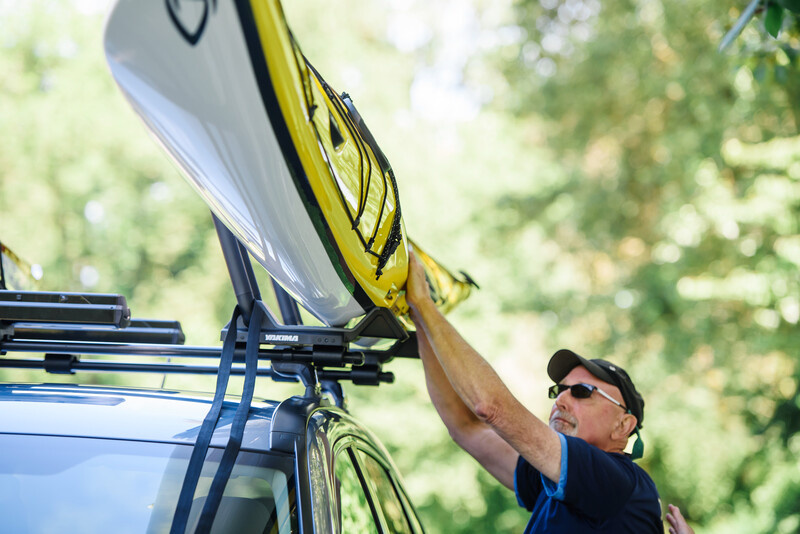Mastering the Art: How to Properly Strap Your Kayak to Your Roof
Transporting your kayak safely to your next adventure starts with properly securing it to your vehicle's roof rack. Incorrect strapping techniques can lead to damage to your kayak, car, or worse—an accident on the road. In this guide, we’ll break down the correct technique for strapping your kayak to your roof, ensuring it stays secure and safe during transport.
1. Gather the Right Equipment
Before you start, make sure you have the right tools for the job:
- Roof Rack: A sturdy rack system designed for kayaks, with crossbars and, ideally, kayak cradles or pads.
- Cam Straps: These are the best option for securing a kayak. Avoid ratchet straps, as they can overtighten and damage your kayak.
- Bow and Stern Lines: These provide additional security to prevent the kayak from shifting.
- Padding or Foam Blocks: If you don’t have kayak cradles, use foam blocks or pool noodles to protect both the kayak and your car.
2. Position the Kayak Correctly
Step 1: Center the Kayak on the Roof Rack
Place the kayak hull-side down (unless your roof rack is designed for another orientation). Align it so the weight is evenly distributed over the crossbars.
Step 2: Keep It Balanced
The kayak should not overhang too much at either end. Ideally, it should extend equally beyond the front and rear of the vehicle.
Tip: If transporting two kayaks, use stackers or J-cradles and ensure both are positioned securely.
3. Secure the Kayak with Cam Straps
4. Use Bow and Stern Lines
Step 1: Attach the Lines
- Secure the bow and stern lines to the front and rear of the kayak. Attach them to your vehicle’s tow points or hood/trunk loops.
Step 2: Tighten Without Overtightening
- Ensure the lines are snug to prevent the kayak from shifting but avoid overtightening, which could damage the kayak or your vehicle.
Why Bow and Stern Lines Matter
These lines prevent the kayak from swaying during high-speed travel or strong crosswinds, adding an extra layer of security.
5. Perform a Final Check
Step 1: Shake Test
Give the kayak a firm shake to ensure it doesn’t move. If it shifts, recheck the straps and lines.
Step 2: Inspect Strap Placement
Ensure all straps are secure and not rubbing against sharp edges or corners of the kayak or car.
Step 3: Double-Check Bow and Stern Lines
Confirm that the bow and stern lines are snug but not stressing the kayak or vehicle.
6. Drive Carefully
When transporting your kayak:
- Avoid High Speeds: Wind resistance can put extra stress on your straps.
- Watch for Noise: Flapping straps or whistling sounds may indicate something is loose.
- Check at Stops: Periodically inspect the kayak and straps during long trips.
Conclusion:
Securing your kayak properly to your roof is essential for a safe and stress-free journey. By using the right equipment, positioning the kayak correctly, and securing it with cam straps and bow/stern lines, you can confidently transport your kayak wherever adventure calls. Always take the time to double-check your setup before hitting the road to ensure both your kayak and fellow drivers stay safe.
Follow these steps, and you’ll be ready to paddle away worry-free!







